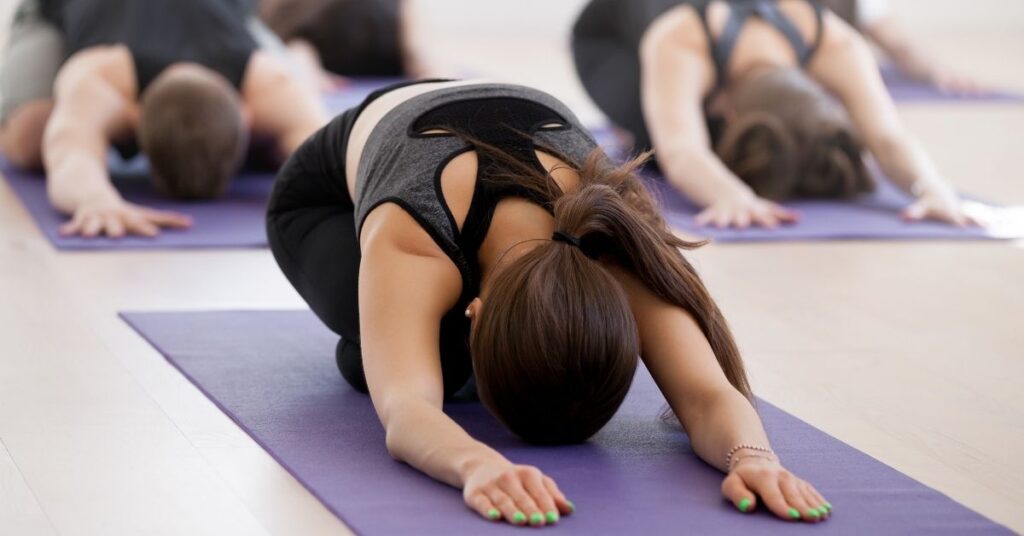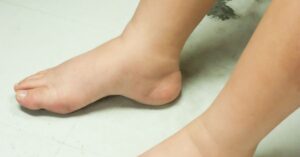Lymphedema is a condition that can feel like an uninvited guest, lingering in the body and causing swelling, discomfort, and sometimes frustration. It often shows up after cancer treatments, surgeries, or other disruptions to the lymphatic system, leaving people searching for ways to manage it. While medical treatments like compression garments and manual lymphatic drainage are common, there’s a growing interest in complementary practices like yoga. Could something as accessible as yoga make a difference for lymphedema? The answer might surprise you. Yoga, with its gentle movements, mindful breathing, and focus on body awareness, offers a unique set of benefits for those navigating this condition. This article explores how yoga can benefit you, why it works, and practical ways to incorporate it into your daily life.
What is Lymphedema, Anyway?
Before exploring the benefits of yoga, it’s essential to understand what lymphedema is. The lymphatic system is akin to the body’s drainage network, facilitating the movement of fluid, waste, and immune cells to maintain smooth bodily functions. When this system gets disrupted—say, from lymph node removal during cancer surgery or radiation damage—fluid can build up in tissues, causing swelling. This is lymphedema. It often affects the arms or legs but can also occur in other areas.
The swelling isn’t just a cosmetic issue. It can feel heavy, limit movement, and increase the risk of infections. Traditional treatments focus on reducing fluid buildup, but they often overlook the emotional and physical toll that this condition can take. That’s where yoga comes in, offering a holistic approach that supports both body and mind.
Why Yoga? The Big Picture
Yoga isn’t just about striking poses on a mat. It’s a practice that weaves together movement, breath, and mindfulness, creating a ripple effect of benefits. For lymphedema, yoga’s appeal lies in its ability to stimulate circulation, reduce stress, and improve mobility—all without placing undue strain on the body. Unlike high-intensity workouts, yoga can be adapted to suit any fitness level, making it accessible for individuals experiencing swelling or discomfort.
Think about it: when you’re dealing with a condition like lymphedema, the last thing you want is to feel overwhelmed by a complicated treatment plan. Yoga provides a gentle and intuitive way to care for yourself. It’s not about pushing through pain but listening to your body and moving in ways that feel good. Let’s break down the specific ways yoga can help.
Boosting Lymphatic Flow Through Movement
Gentle Poses for Fluid Movement
One of yoga’s biggest wins for lymphedema is its ability to encourage lymphatic flow. The lymphatic system doesn’t have a pump like the heart; it relies on muscle movement and breathing to keep fluid moving. Yoga’s slow, deliberate poses can act like a natural pump, helping to reduce fluid buildup in affected areas.
Take poses like Cat-Cow or seated spinal twists. These movements gently compress and release tissues, stimulating lymph flow without jarring the body. For individuals with arm lymphedema, shoulder rolls or supported arm stretches can help encourage drainage while maintaining a low-impact approach. The key is to move mindfully, avoiding overexertion that could worsen swelling.
Adapting Poses for Comfort
Not every yoga pose is suitable for lymphedema, and that’s okay. The beauty of yoga is its flexibility. Poses can be modified with props, such as blocks, bolsters, or chairs, to ensure optimal comfort. For example, if leg swelling makes standing poses tricky, seated or reclined poses can still provide benefits. A qualified yoga instructor, especially one trained in lymphedema management, can tailor a sequence to your specific needs, ensuring you move safely and effectively.
Breathing: The Unsung Hero
How Breathwork Helps Lymphedema
If you’ve ever taken a yoga class, you’ve probably heard the teacher emphasize breathing. It’s not just fluff—breathwork is a game-changer for lymphedema. Deep, diaphragmatic breathing creates a gentle pumping action in the body, supporting lymphatic drainage. When you inhale deeply, the diaphragm moves, creating pressure changes that help fluid circulate. Exhaling fully releases tension, further aiding the process.
Try this: sit comfortably, place one hand on your belly, and breathe deeply so your hand rises and falls. Even five minutes of this can make a difference. It’s simple, doesn’t require a yoga studio, and can be done anywhere—your living room, your office, even while waiting at the doctor’s office.
Calming the Nervous System
Lymphedema can be stressful, and stress isn’t just mental—it can tighten muscles and restrict circulation, potentially worsening symptoms. Yoga’s focus on slow, intentional breathing activates the parasympathetic nervous system, the body’s “rest and digest” mode. This reduces cortisol levels, eases tension, and creates a calmer environment for the lymphatic system to function properly. It’s like giving your body permission to relax and heal.
Improving Mobility and Strength
Restoring Range of Motion
Lymphedema can cause limbs to feel heavy or stiff, limiting your ability to move freely. Yoga helps by gently stretching and strengthening muscles, improving range of motion over time. For example, someone with arm lymphedema might start with simple wrist circles or supported shoulder stretches, gradually building confidence in their movements.
The goal isn’t to become a pretzel but to regain functional mobility. Regular practice can make everyday tasks—like reaching for a shelf or carrying groceries—feel less daunting. Additionally, stronger muscles support better circulation, which is beneficial for lymphatic health.
Building Strength Without Strain
Yoga isn’t about bulking up, but it does build functional strength. Poses, such as modified Downward Dog or Warrior II, engage muscles in a controlled manner, supporting the body without overloading it. For lymphedema, this is crucial—too much strain can exacerbate swelling, but gentle strengthening exercises help stabilize the affected areas. It’s a balancing act, and yoga nails it.
Reducing Stress and Emotional Strain
The Mind-Body Connection
Living with lymphedema isn’t just physical. The visible swelling, the constant management, the worry about flare-ups, it can weigh on your mental health. Yoga’s mindfulness component helps address this. By focusing on the present moment, whether through a pose or a breath, yoga creates a space to process emotions without judgment.
Studies have shown that yoga can lower anxiety and depression, which is especially relevant for chronic conditions. When you’re less stressed, your body is better equipped to manage symptoms. It’s not about erasing challenges but finding a way to coexist with them more peacefully.
Building Confidence and Body Awareness
Lymphedema can make you feel disconnected from your body like it’s betraying you. Yoga flips this narrative by fostering body awareness. As you move through poses, you start noticing what feels good, what needs rest, and how your body responds. This empowers you to take an active role in your care, boosting confidence and self-esteem. It’s a reminder that your body is still capable, even with lymphedema.
Yoga’s Role in Pain Management
Easing Discomfort Naturally
Swelling from lymphedema can cause discomfort or even pain, especially if tissues become fibrotic or tight. Yoga’s gentle stretches can alleviate this by improving circulation and reducing muscle tension. Poses like Legs Up the Wall, where you lie on your back with your legs elevated, can be particularly soothing for leg lymphedema, as gravity helps drain fluid.
The pain relief isn’t just physical. Yoga’s meditative aspects can shift how you perceive discomfort, making it feel less overwhelming. It’s not a cure-all, but it’s a tool to make daily life more comfortable.
Listening to Your Body’s Signals
One of yoga’s core principles is listening to your body. This is especially important for individuals with lymphedema, as overexertion can trigger swelling or fatigue. Yoga teaches you to tune into subtle signals—like when a pose feels too intense or when your body craves rest. This awareness can prevent flare-ups and make your practice sustainable.
Practical Tips for Starting Yoga with Lymphedema
Finding the Right Instructor
Not all yoga classes are created equal, especially when it comes to lymphedema. Look for an instructor certified in therapeutic yoga or trained in lymphedema management. They’ll know how to modify poses, avoid risky movements, and prioritize lymphatic health. Online platforms, such as Yoga for Lymphedema, or local cancer support centers often offer specialized classes.
If you’re new to yoga, start with a private session or a small group class. This allows the instructor time to understand your needs and tailor the practice to meet them accordingly. Don’t be shy about sharing your condition—good teachers will appreciate the context.
Creating a Home Practice
You don’t need a fancy studio to practice yoga. A quiet corner of your home, a mat, and some props (like pillows or a folded blanket) are enough. Start with short sessions—10 to 15 minutes—and focus on gentle poses and breathing. Apps or YouTube channels dedicated to therapeutic yoga can guide you but always cross-check with a professional to ensure safety.
Consistency matters more than intensity. Even a few minutes daily can add up, helping you build a routine that feels manageable. Think of it as a small gift to yourself, not another to-do list item.
What to Avoid
While yoga is generally safe, some poses or styles may not be ideal for individuals with lymphedema. Hot yoga, for instance, can increase swelling due to heat and dehydration. Inversions, such as headstands or intense flows, may put too much pressure on affected areas. Always consult with your healthcare provider or lymphedema therapist before starting a new practice, especially if you have other health conditions.
The Science Behind Yoga and Lymphedema
Research on yoga for lymphedema is still in its early stages, but the findings are promising. A 2018 study in the Journal of Clinical Oncology found that yoga improved the quality of life and reduced arm swelling in breast cancer survivors with lymphedema. Another study from 2020 showed that yoga’s breathing and movement practices lowered inflammation markers, which can exacerbate lymphatic issues.
These findings aren’t definitive, and further research is needed to determine exactly how yoga works its magic. However, the anecdotal evidence is also strong—countless people with lymphedema report feeling lighter, more mobile, and less stressed after regular practice. Science is catching up to what practitioners have known for years: yoga has a unique ability to heal.
Real Stories: Yoga in Action
Consider Sarah, a 45-year-old breast cancer survivor who developed arm lymphedema after surgery. Frustrated by constant swelling, she joined a therapeutic yoga class on a friend’s recommendation. At first, she was skeptical—could gentle stretches help? But after a few weeks of modified poses and deep breathing, she noticed her arm felt less heavy, and she slept better. Yoga didn’t cure her lymphedema, but it gave her tools to manage it and a renewed sense of control.
Then there’s Mark, a 60-year-old with leg lymphedema from prostate cancer treatment. He started with chair yoga at a community center, focusing on leg stretches and breathwork. Over time, he gained enough confidence to try a gentle flow class. The swelling didn’t vanish, but his mobility improved, and he felt less anxious about his condition. These stories aren’t outliers—they reflect the quiet power of yoga for real people.
Making Yoga a Lifestyle
Yoga isn’t a quick fix; it’s a long-term commitment to your well-being. The beauty is that it doesn’t demand perfection. Some days, you might do a full sequence; others, you might just breathe deeply for a few minutes. Both count. Over time, yoga can become a natural part of your routine, like brushing your teeth or drinking water.
It’s also worth noting that yoga’s benefits extend beyond lymphedema. Improved flexibility, better sleep, and a calmer mind spill over into every area of life. By starting small and staying consistent, you’re not just managing a condition—you’re building a healthier, more balanced version of yourself.
Conclusion: A Gentle Path Forward
Lymphedema can feel like a roadblock, but it doesn’t have to define your life. Yoga offers a gentle and empowering way to manage symptoms, from reducing swelling to easing emotional stress. Its blend of movement, breath, and mindfulness creates a holistic approach that complements medical treatments while fostering a deeper connection to your body. Whether you’re a yoga newbie or a seasoned practitioner, there’s a place for this practice in your journey.
The key is to start where you are, listen to your body, and seek guidance from professionals who specialize in understanding lymphedema. With patience and consistency, yoga can become a trusted ally, helping you navigate life’s ups and downs with greater ease and grace. So, why not roll out a mat and give it a try? Your body and mind might thank you.
Frequently Asked Questions
Q1: Can yoga cure lymphedema?
Yoga cannot cure lymphedema, as it’s a chronic condition caused by damage to the lymphatic system. However, it can help manage symptoms such as swelling, discomfort, and stress, thereby improving quality of life when practiced safely.
Q2: Is yoga safe for all types of lymphedema?
Yoga is generally safe but should be tailored to your specific condition. Consult your healthcare provider and work with a yoga instructor trained in lymphedema management to avoid poses or practices that could exacerbate your symptoms.
Q3: How often should I practice yoga for lymphedema?
Start with short sessions, such as 10-15 minutes daily or a few times a week, and adjust the duration based on how your body feels. Consistency is more important than duration, so find a sustainable routine.
Q4: Do I need to join a yoga class, or can I practice at home?
You can practice at home with guidance from apps, videos, or a therapeutic yoga plan, but starting with a trained instructor ensures you learn safe techniques. Home practice is great for convenience and consistency.
Q5: What’s the best time of day to do yoga for lymphedema?
There’s no universal best time, choose what fits your schedule and energy levels. Morning yoga can energize you, while evening sessions may help with relaxation and fluid drainage before bed.





